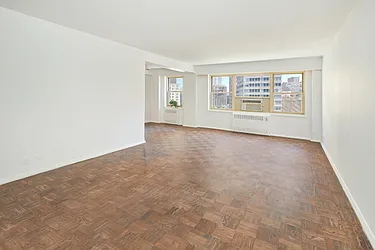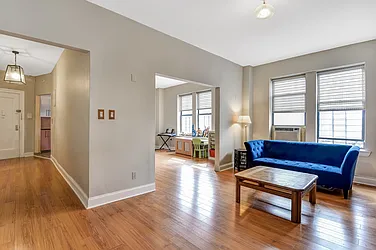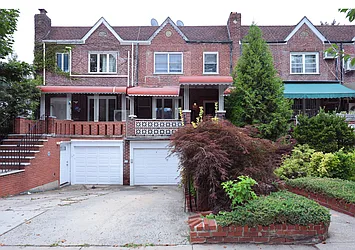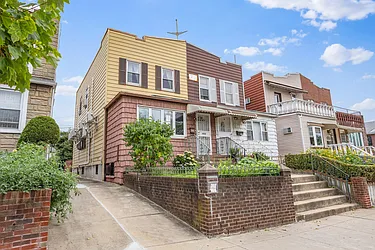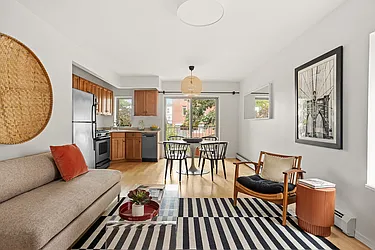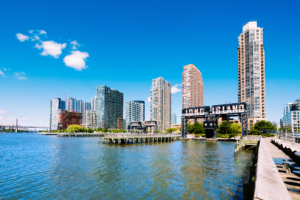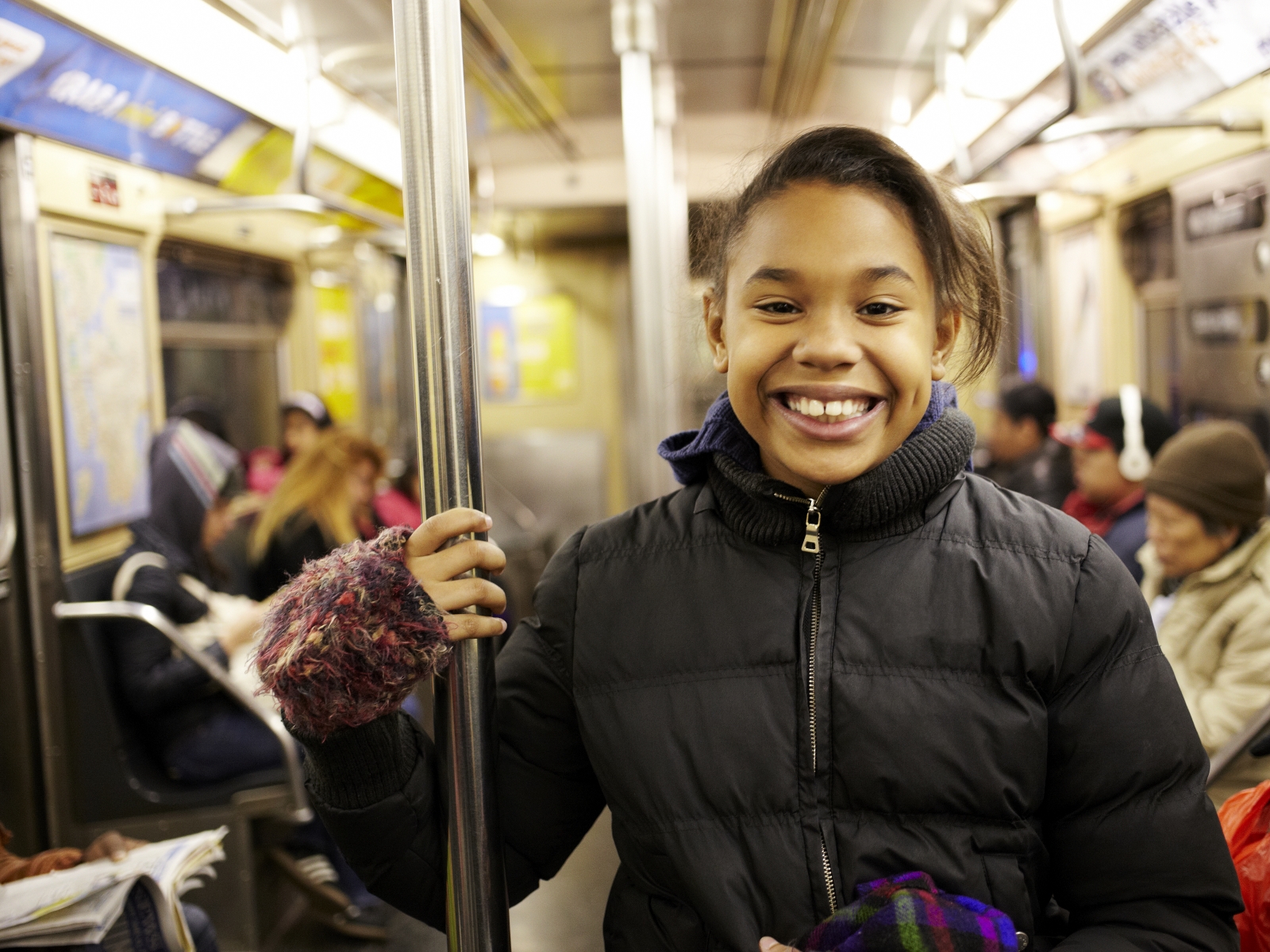
What’s the right age for a child to ride the subway alone? It depends. (Granger Wootz/Blend Images/Getty Images)
Many New Yorkers remember walking or taking the train to school before they could tie their own shoes. But times change, and though the city is now safer than ever, NYC parents must balance their kids’ independence and safety without sacrificing either. So we posed the question to several NYC parents, and scoured official rules and regulations, to find out: At what age can kids ride the subway alone?
At What Age Can Kids Ride the Subway Alone?
While nothing is set in stone, the official recommended age minimum for kids traveling to school alone in NYC is 8 to 13.
Some methods of transit have very specific rules for unaccompanied minors — like Amtrak’s “12 and under” rule — but NYC’s official stance on this is a bit more lax. Officially, the MTA “recommends that children under the age of 8 be accompanied by an adult or a responsible youth (at least 12 years old) when riding its trains.” This goes for the entire transit system: NYC subways, buses, the LIRR, and Metro-North.
NYC students begin receiving MetroCards in the seventh grade, so we can take this as the official age sanctioned by NYC officials at which a child can begin traveling alone.
But official rules and a parent’s heart are two different things. Let’s see what New Yorkers have to say about this issue.
Manhattan 2-3BRs Under $1.75M Article continues below
Parents Respond: When Is It Okay to Let Kids Take the Train to School Alone?
Many factors inform the decision, but NYC parents seem to generally agree that most 9- to 10-year-old children are ready to travel to school on the subways. But still, “It depends on the maturity of the child rather than the specific age,” says one Queens parent.
A mature child ready for solo travel must know basic safety rules (e.g., not to go anywhere with strangers, and to find a policeman or another official if they encounter any problems). They should know or have on them at all times their home address, school address and relevant phone numbers.
The child should also be very familiar with the route to school and know alternate ways to get home in case of train issues. “Transit in NYC is fairly organized,” a Queens mom points out. “It just takes familiarity with entering and exiting trains and buses, and familiarity with the maps and geography.”
Besides maturity, parents also cite distance as a factor. Having few blocks to travel from the train station or a quick walk through an area where few cars pass is a great way for kids to experience independence in relative safety.
One Brooklyn parent told us that, “at age 9, my husband would take [my stepson] to the train stop, and he would walk the four blocks to school by himself.”
The mode of transportation also matters. Some parents feel safer with their kids taking the bus as opposed to the train. The bus, says one Brooklyn mom, has “an adult (driver) within direct access if need be.”
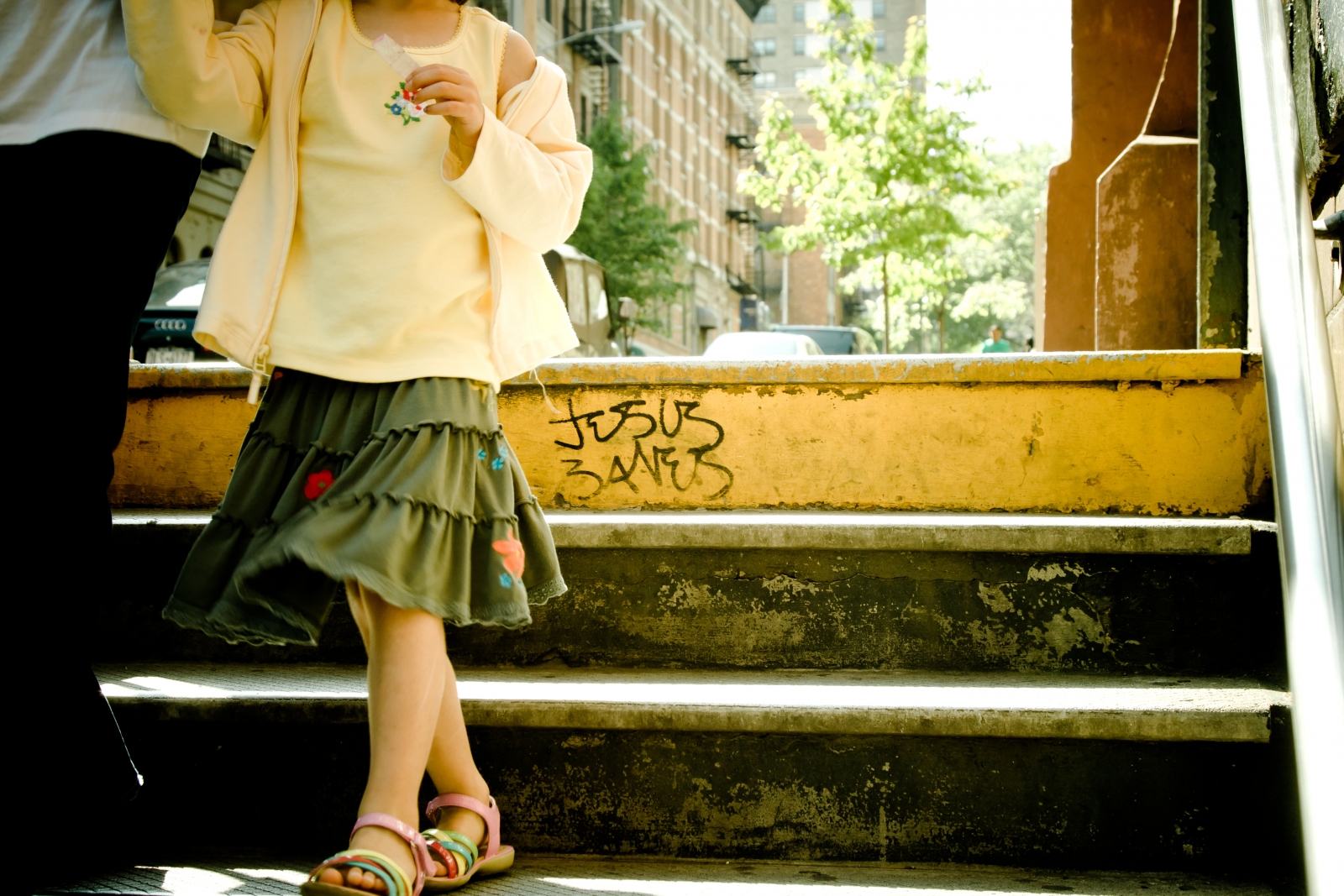
Would you let your child ride the subway alone? (Pablo Hart/Getty Images)
Tips and Advice for Sending Kids to School Alone in NYC
Make sure your child knows important addresses and contact numbers. If possible, supply them with a phone or some other means of reaching out if they encounter any kind of trouble.
Educate your child about safety rules for walking in the streets and taking the bus or train.
Start small. Before you let your child go to school on their own, send them down the street to a friend’s house or to the corner store — especially if the neighborhood is relatively safe. “I’ve started sending [my son] and our neighbor (a girl age 9) to the store on the corner when I need milk or eggs,” the Brooklyn mom says. “But it’s only two blocks and it’s a dead end, so there are very few cars.”
Make the trip to school with your child several times and take a less active role each time. This will allow them to become confident in the city environment.
Find a travel buddy for your child, perhaps an older neighbor who goes to the same school. “Many kids find themselves traveling with their classmates anyway, because of zoning and since most kids have to arrive at a common time,” one mom points out. Encourage your child to meet with friends on the commute, or set this up yourself with neighbors or other parents in your child’s class.
Inform neighbors and your child’s teachers and guidance counselors of this decision. A well-meaning neighbor or school official can report a child traveling to school unaided to ACS if they feel that this endangers the child (and in the case of school officials, who are mandated reporters, it’s always better to be safe than sorry). Open communication will prevent misunderstandings and will make sure your child has a support system at school and home.
Brooklyn 2-3BRs Under $1.25M Article continues below
Alternatives to Public Transportation for Kids
Some parents feel like they’ll never be ready to expose their children “to the germs, smells, and crazies at a young age,” as one mom put it. “I don’t want to have to explain to an 11-year-old why the Q train commuter with the shopping cart that overloaded the olfactory sense is talking to the window.” Whatever the reason, if you might feel that your child is not mature enough to travel alone in the city, there are plenty of alternatives to public transit.
Many schools offer bus programs — inquire in your school to see if you qualify.
Some parents use Uber to get their kids home or to after-school activities, but we don’t recommend it. Uber rules clearly state that drivers should not pick up anyone under 18 years of age, and they can reject riders if they fail to prove their age. Some drivers will still pick kids up, however
Luckily, NYC parents have a few other methods for getting their kids to school safely, thanks to programs like 511 NYC. This program offers completely free rideshare and carpool options for parents all across New York, and can even match your kids with a “bike buddy” if you would like your child to bike to school.
Another potential method is the newly launched GoKid Carpool app, which organizes carpools with parents and other drivers comprised of trusted individuals (and not paid drivers). Although this app won’t match you up with potential carpoolers, it will make planning school transportation much easier between friends and relatives.
If your child’s school is close enough for walking or biking, you can work with your community to create a safe and structured environment for all kids to get to school — something that will benefit many other parents in addition to giving you peace of mind. The nonprofit program Safe Routes to School can help you get started with tips and resources.
[This post has been edited and republished.]
—
Inspired to find your next place in New York? Whether you’re looking to rent or to buy, search NYC apartments on StreetEasy.




